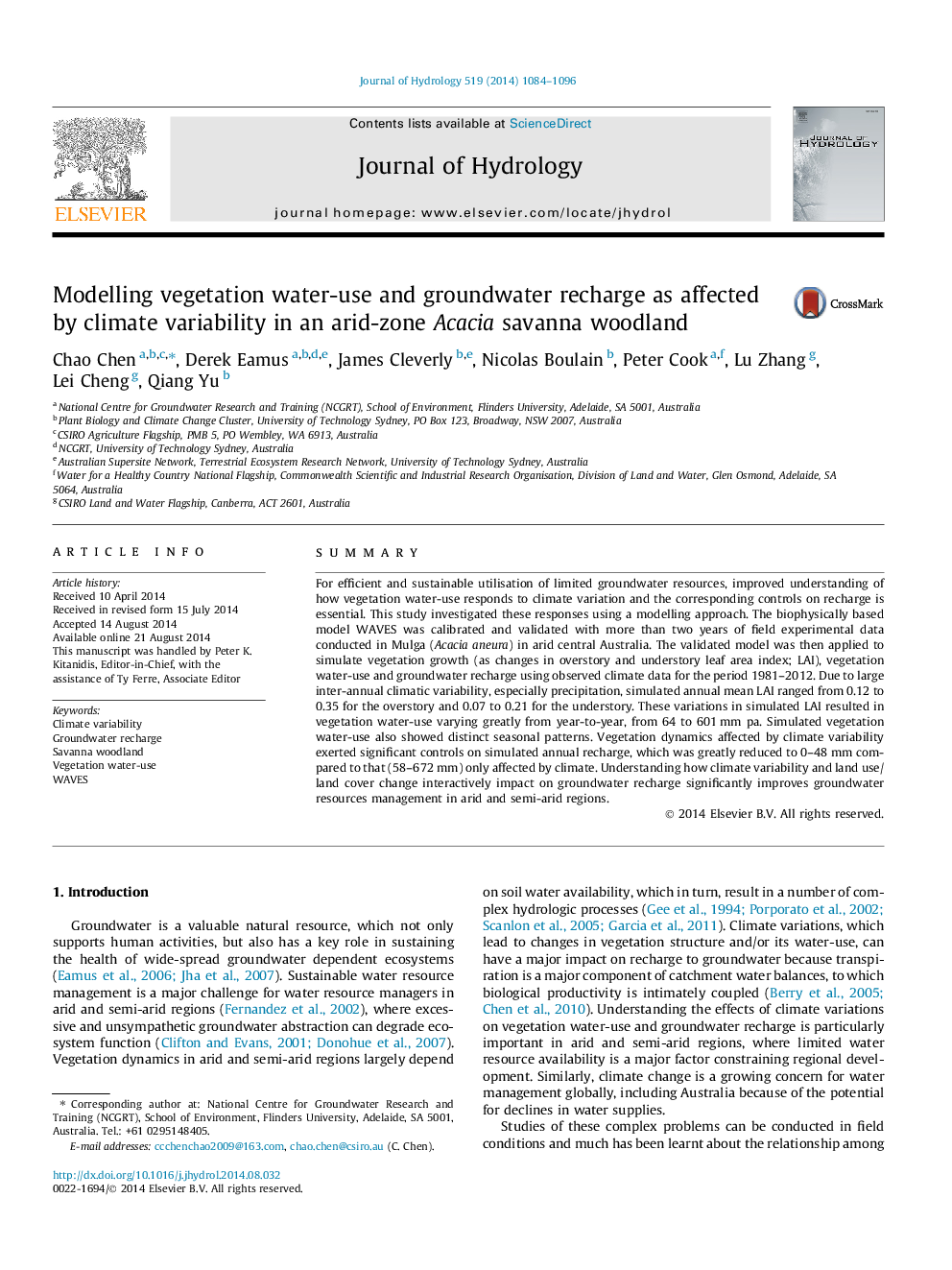| Article ID | Journal | Published Year | Pages | File Type |
|---|---|---|---|---|
| 6412567 | Journal of Hydrology | 2014 | 13 Pages |
â¢We model the effects of climate variability on vegetation water-use.â¢We quantify the magnitude of recharge under a semi-arid savanna woodland.â¢Climate variability greatly affected vegetation water-use and recharge.â¢Vegetation exerted strong controls on recharge.â¢Ability of vegetation to reduce recharge was enhanced in dry years.
SummaryFor efficient and sustainable utilisation of limited groundwater resources, improved understanding of how vegetation water-use responds to climate variation and the corresponding controls on recharge is essential. This study investigated these responses using a modelling approach. The biophysically based model WAVES was calibrated and validated with more than two years of field experimental data conducted in Mulga (Acacia aneura) in arid central Australia. The validated model was then applied to simulate vegetation growth (as changes in overstory and understory leaf area index; LAI), vegetation water-use and groundwater recharge using observed climate data for the period 1981-2012. Due to large inter-annual climatic variability, especially precipitation, simulated annual mean LAI ranged from 0.12 to 0.35 for the overstory and 0.07 to 0.21 for the understory. These variations in simulated LAI resulted in vegetation water-use varying greatly from year-to-year, from 64 to 601Â mm pa. Simulated vegetation water-use also showed distinct seasonal patterns. Vegetation dynamics affected by climate variability exerted significant controls on simulated annual recharge, which was greatly reduced to 0-48Â mm compared to that (58-672Â mm) only affected by climate. Understanding how climate variability and land use/land cover change interactively impact on groundwater recharge significantly improves groundwater resources management in arid and semi-arid regions.
